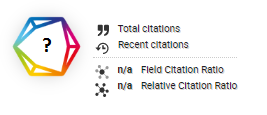TWO-DIMENSIONAL PHYSICAL MODELLING IN THE ESTUARIES OF AUR RIVER
DOI:
https://doi.org/10.46984/sebatik.v24i1.860Keywords:
Aur river, standard flume, scale modelAbstract
Musi River is the main river with a river length of more than 750 km and the average width of 540 m which is still affected by the tides of seawater from the thirteen existing river basin systems. Aur River is one of a tributary of the Musi River located in the Seberang Hulu area of Palembang city. Aur River needs to do research related to the rise in water level in the river body if extreme rainfall occurs that will cause inundation in the upstream area of the river. The study was conducted with a hydraulic model approach that is using a physical model of the channel with a scale model and data from existing prototypes and with the existing conditions and the running time of the model carried out for 1.50 hours with a certain period of time data collection is carried out both erosion and sedimentation data and later obtained patterns and the total amount of bed load at the estuary of river. The results of river erosion and sedimentation patterns later. The result of the research was sediment transport patterns with three times period are 30 minutes, 60 minutes and 90 minutes so that the formed of erosion and sedimentation pattern with the total bed load be range 0.66 cubic meter per day from formula, 6.34 cubic meter per day from Einstein’s & Lane and 7.48 cubic meter per day from MPM formula.
References
Ikhsan., Cahyono., 2017. Effect of Variation of water discharge on bed load rate on open channel with steady flow pattern, Civil Engineering Media, 2017, January 2017
Lamchuan, P et al,. 2020. Daily Suspended Sediment Load Estimation Using Multivariate Hydrological Data. International Journal of GEOMATE, April, 2020, Vol.18, Issue 68, pp. 1 – 8
Syarifudin, A., 2013. The 2nd International Conference on Informatics Environment, Energy and Applications (IEEA 2013), Bali, Indonesia, March 16-17, , JOCET (Journal of Clean Energy and Technology) Journal ISSN: 1793-821X, Vol.2, No.1, 2013, January 2014
Syarifudin, A., 2015. 5th ICIBA International conference on information technology & Engineering Application, Palembang, Indonesia
Syarifudin A., 2017. Applied Hydrology (Andi Publishing Company), , pp 45-48
Syarifudin A,. 2017. Environmentally Urban Drainage (Andi Publishing Company), pp 38-42
Syarifudin, A., 2017. The influence of Musi River Sedimentation to The Aquatic Environment https://doi.org/10.1051/matecconf/201710104026 Volume 101, MATEC Web Conf, 101(2017)04026, [published online 09 March 2017]
Shu, A.P, Tang C, Zhang X, et al., 2015. Deposition morphology of non-homogeneous debris flow and its energy characteristics. Journal of Mountain Science, 12(5), , DOI:10.1007/s11629-014-3188-9
Zhang, W., Xu, Y., Wang, Y., & Peng, H.,. 2014. Modeling Sediment Transport and River Bed Evolution in River System, Journal of Clean Energy Technologies, Vol. 2, No. 2, April 2014
Downloads
Published
How to Cite
Issue
Section
License
Authors retain all their rights to the published works, such as (but not limited to) the following rights; Copyright and other proprietary rights relating to the article, such as patent rights, The right to use the substance of the article in own future works, including lectures and books, The right to reproduce the article for own purposes, The right to self-archive the article








